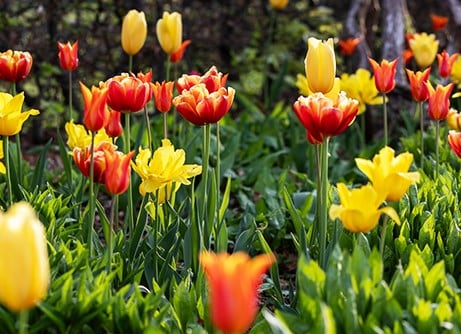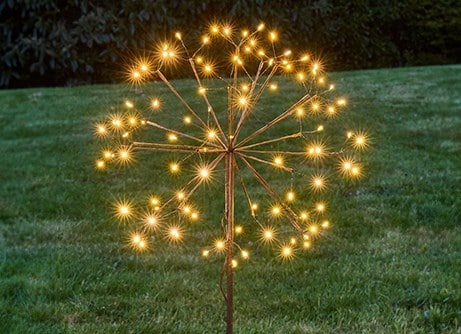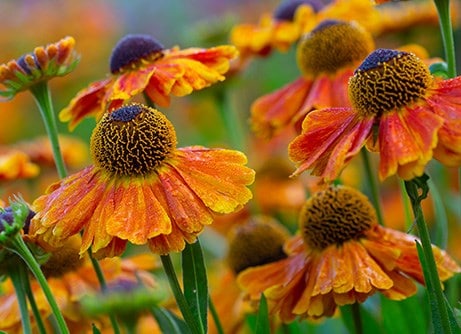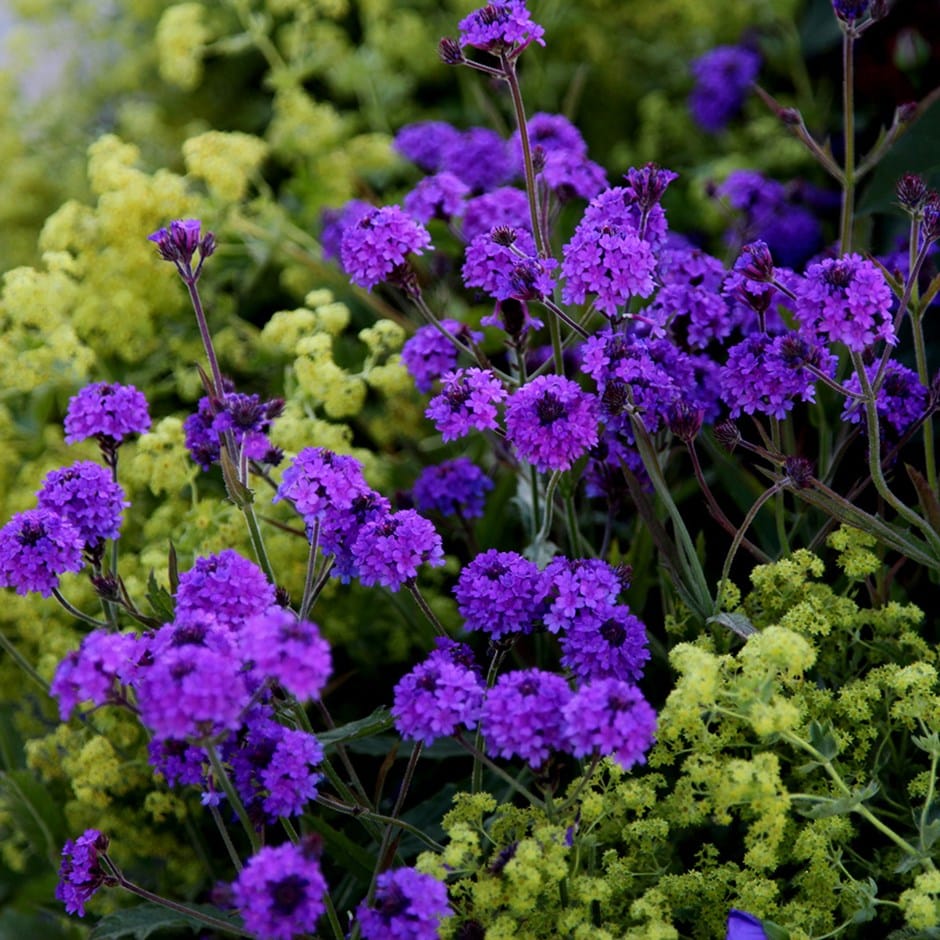This low-maintenance plant thrives positioned in full sun and well-drained soil. Space them approximately 30-40cm (12-16in) apart to allow for their branching habit.
While drought-tolerant once established, regular watering during dry spells will promote continued flowering. Deadheading isn't necessary, but it can encourage a second flush of blooms. In cold conditions, verbena can suffer dieback if cut back in autumn, so it's best to leave the plant until spring.
We advise cutting back the old growth to approximately 15cm (6in) when you see new shoots emerging at the base. In winter, mulch around the base of the plant with a deep, dry mulch to help protect the roots against extreme cold.
Support plants in either exposed or partially shaded positions. If this is necessary use natural materials such as brushwood or twiggy pea-sticks.










